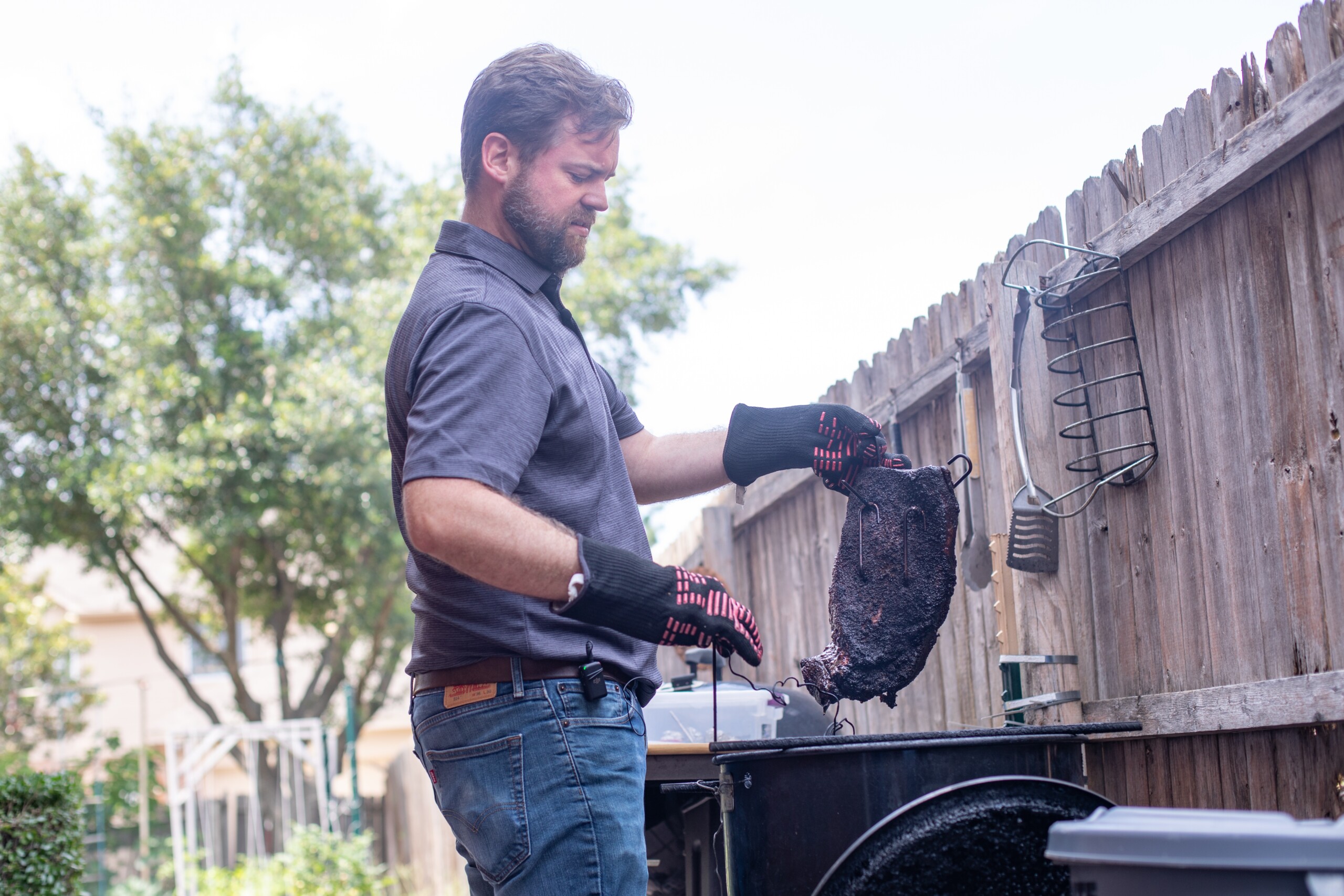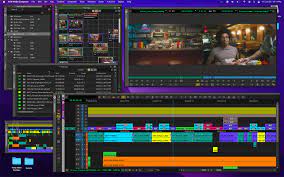Exterior Ten50 BBQ in Richardson, the odor of smoked meats hung within the air on a sizzling day in June. Dozens had been lined up throughout the lunch hour to order heaping trays of smoked brisket, turkey, and pork earlier than heading inside.
A couple of weeks in the past, UT Dallas professor Jeremiah Gassensmith introduced his college students to Ten50 for a tasting for a category known as the Historical past and Science of Barbecue.
Gassensmith normally retains himself busy with a powerful day job. He runs the Gassensmith Lab on the college, the place his analysis focuses on how virus particles work together with natural and solid-state chemistry. Considered one of his lab’s most up-to-date analysis tasks entails delivering vaccines by means of a puff of fuel.
When he’s not within the lab, he’s a self-proclaimed yard barbecue chef. He taught himself how you can cook dinner out of curiosity, although he says generally it was out of necessity. He grew up in Indiana, the place most dinners encompass meat and potatoes.
“Most of my household, I really like them, however they’re not nice cooks,” he says.
He says he usually discovered himself on the lookout for totally different cuisines outdoors of his neighborhood. When he was residing within the Midwest, Gassensmith says he discovered one of the best barbecue in Black communities.
“It didn’t actually permeate very far out of these communities,” he says. “It additionally wasn’t a spot I frequented. Once I received it, it was good, and I beloved it, however it wasn’t one thing we may eat loads of the time.”
Gassensmith says he was decided to “applicable” the state’s barbecue tradition when he received to Texas along with his spouse. He purchased the most affordable smoker he may discover, so low-cost that he needed to wrap it in thermal insulation to maintain the warmth inside. He took benefit of what he may and used it as a solution to educate himself how you can smoke meat.
Chemistry and barbecue have at all times gone hand-in-hand, Gassensmith says, however he didn’t totally admire the hyperlink till after he began smoking. In contrast to cooking on a stovetop, which is basically heating meals on prime of one thing sizzling, barbecue entails intently monitoring thermodynamics and reactions.
“It was superior chemistry,” he says. “It was the form of factor that makes sophomores actually upset after they must be taught it.”
Barbecuing and smoking contain watching how warmth impacts the meat. The temperature and size of time meat is smoked modifications the style and texture. Rendering fats, for instance, is extra than simply placing a fatty piece of meat on a sizzling pan. Rendering fats means destroying cell membranes: if it’s too sizzling, the fats will certainly soften, however all of the proteins will fry up and burn, and it’ll style unhealthy. To render fats appropriately, it should be achieved at a low temperature to regulate the response.
Barbecuing is a Maillard response, or a chemical response between proteins, fat, and sugars that trigger the browning of the meat. Maillard reactions are additionally present in whiskeys, bread, toffee, and roasted peanuts.
“It’s important to entry this slim vary of chemistry along with your temperature, and that chemistry takes some time to occur,” he says. “It’s actually ready for proteins to unfold, and that course of goes very slowly if you need them to unfold in simply the precise method.”
Brisket ought to disintegrate—that’s normally a superb signal the precise chemical reactions passed off. Brisket and pork shoulder, two of the preferred smoked meats, come from closely used components of an animal. When cooked incorrectly, the meat seems chewy and difficult.
Cooking the meat sluggish and low breaks down collagen, which appears like three strands of twisted yarn. When warmth is utilized—ideally between 160 to 180 levels Fahrenheit, Gassensmith says—collagen loosens and melts, and it could possibly bind with water to maintain the meat moist. Too little warmth ends in chewy meat, and an excessive amount of warmth means the collagen tightens and makes the meat dry. Dry brining the meat with salt for a number of hours can assist with this; salt can “wedge” itself into the collagen strands, preserving them open for extra water to be absorbed.
When Gassensmith began smoking his personal brisket, he approached it the best way he would any experiment. He decided crucial variables to see the place changes wanted to be made. On this case, crucial variables are temperature, meat high quality, and time. His go-to is a ten to 15-pound prime reduce brisket. He makes use of a number of thermometer probes to watch the temperature, which may fluctuate based mostly on the scale of the meat.
He additionally sprays his meats with water as they’re smoking. Smoke binds to water and helps give barbecued meat its signature smoky style. It additionally retains the meat moist, however provided that all the pieces else has been achieved appropriately: meat has been brined, collagen is unfastened, and the temperature is constant. Gassensmith admits, although, that chemistry isn’t all that goes into barbecuing.
“It’s an artwork,” he says. “Every bit goes to be totally different. You possibly can apply the scientific methodology solely to date.”
Throughout his class, Gassensmith requested his college students to learn Black Smoke: African Individuals and america of Barbeque by Adrian Miller,and Smokelore: A Brief Historical past of Barbeque in America by Jim Auchmutey. Each books discover the origin of barbecue on this nation.
Throughout the colonial period, European settlers arriving within the Americas noticed the Taino folks of the Caribbean utilizing a wood construction known as a barbacoa for slow-cooking meat over a hearth pit. The time period “barbecue” originates from the Taino phrase “barbacoa.”
“[Barbecue] was propagated in america by European immigrants,” Gassensmith says. “To grasp how that unfold and advanced requires you to grasp quite a bit concerning the historical past of Black migration in america.”
Within the South, enslaved folks had been expert in smoking and pit-roasting. They performed a vital function in shaping southern barbecue traditions. They launched new flavors, spices, and strategies of cooking that grew to become integral to the event of American barbecue.
In Texas, beef is the star of barbecue. However as Black communities migrated north, pitmasters utilized their cooking information to different meats, like pork and rooster. Barbecue methods had been influenced by native flavors, even right down to the sauces. (Carolina barbecue sauces normally have a vinegar base, whereas Kansas Metropolis barbecue sauce is good and spicy.) The result’s regional barbecue types all around the nation, similar to Memphis, Carolina, Kansas Metropolis, and Alabama. Every has its personal story and distinctive historical past.
“Since barbecue is simply this extremely uniquely American dish, I believed it was a good way to show American historical past was by means of meals,” he says.
Gassensmith’s Barbecue Suggestions
Get a fantastic—not simply good—reduce of meat
Barbecue begins with a stable base, and meaning three substances: salt, pepper, and a dang good reduce of meat. For brisket, Gassensmith makes use of prime, which implies ample quantities of fats are marbled within the meat. “You possibly can’t disguise behind decrease high quality cuts of meat,” Gassensmith says. “Do your self a favor and get a pleasant reduce.”
Use water to chill it down and develop a crust
Gassensmith prefers utilizing water whereas smoking the meat. A spritz helps preserve the meat juicy and offers it a smoky crust, as a result of smoke likes to bind to water. It additionally helps regulate the temperature of the meat.
Carefully monitor the temperature
Gassensmith makes use of a number of thermometers when he smokes meat. He makes use of a six-probe thermometer, however at the least two ought to do the job, he says: one thermocouple sensor contained in the smoker and a fast learn thermometer in the midst of the piece of meat. The thermocouple ought to learn round 250 levels Fahrenheit for brisket and 300 levels Fahrenheit for pork.
After it’s achieved, resting will assist the brisket cook dinner somewhat bit extra assist and additional render fats or break down collagen, Gassensmith says, however it doesn’t assist take in any juices.
Get the SideDish Publication Dallas’ hottest eating information, recipes, and opinions served up recent to your inbox every week.










